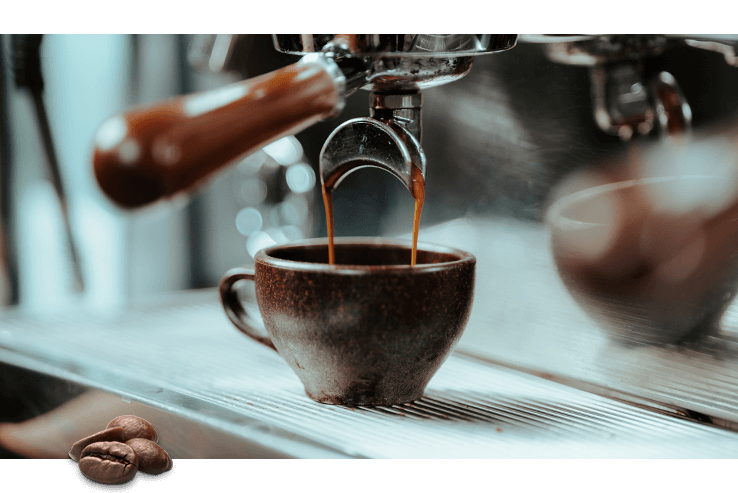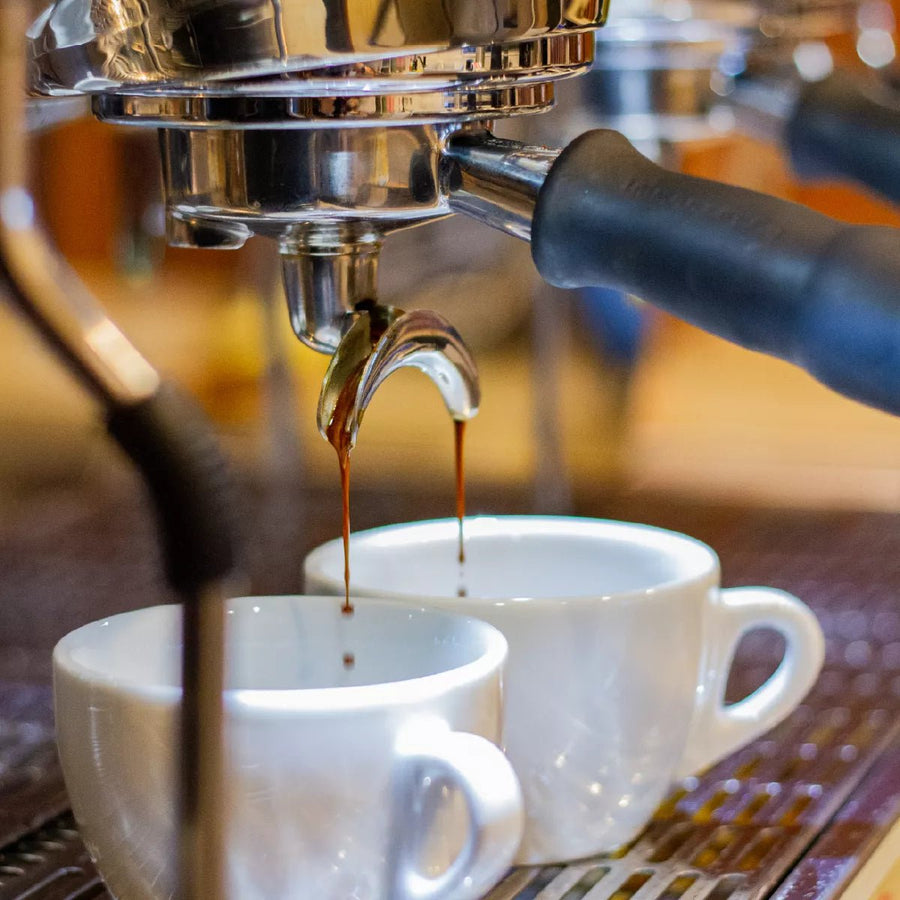A First-Time User’s Guide to Understanding SOE Single Origin Espresso
Comprehending Coffee Beans: the Trip From Coffee to Blended Coffee Beans

The Origins of Coffee: A Worldwide Point Of View
While you could assume of coffee as a contemporary staple, its beginnings map back centuries, intertwining with cultures throughout the globe. The story begins in Ethiopia, where legend claims a goat herder named Kaldi uncovered the stimulating effects of coffee beans after seeing his goats romping vigorously after eating them.
As profession paths increased, coffee made its means to Europe in the 17th century, rapidly gaining popularity. Each society added its one-of-a-kind twist to coffee preparation, improving its background.
Growing and Harvesting of Coffee Beans
As coffee's journey progressed, the focus shifted to the farming and harvesting of particular bean ranges, specifically those utilized for coffee. You'll find that coffee beans typically originate from Arabica or Robusta plants, each offering distinct tastes. The ideal expanding conditions consist of high elevations and rich, well-drained dirt, which enhance the beans' high quality.
During the harvest, choosing approaches differ. Timing is crucial; you want to gather when the cherries reach peak perfection for maximum taste.
Once harvested, the beans are prepared for processing, which is essential in establishing their last taste. Recognizing the growing and harvesting processes offers you understanding right into what goes right into your preferred espresso, improving your appreciation for each and every mug.
Processing Approaches: From Cherry to Bean
Since you have actually learnt more about gathering espresso beans, allow's explore exactly how those cherries change right into the coffee beans you love. You'll see exactly how different harvesting techniques influence flavor, followed by the vital actions of fermentation and drying out. We'll damage down the milling and grading process that determines your coffee's top quality.
Collecting Methods Explained
When it comes to coffee, comprehending harvesting strategies is crucial, since they directly influence the taste and quality of the beans you enjoy. Careful choosing entails hand-picking just ripe cherries, ensuring you get the finest quality beans. Ultimately, the option of gathering strategy can considerably influence your coffee experience, so it's worth understanding how those beans made it to your mug.
Fermentation and Drying Out
After collecting, the following actions in handling coffee beans play a considerable role in forming their flavor. You'll locate that fermentation is vital, as it aids damage down the mucilage bordering the beans, enhancing their taste profile. Depending upon the approach, this process can last from a couple of hours to a number of days, with differing results based on temperature and moisture.
As soon as fermentation is complete, drying complies with, which is similarly crucial. You can select from sun-drying or mechanical drying out methods. Sun-drying enables the beans to take in flavors from the atmosphere, while mechanical drying out guarantees constant dampness degrees despite climate. Proper drying is vital to prevent mold and protect the beans' high quality, ultimately influencing your mug of coffee.
Milling and Grading Process
As fermentation and drying out set the phase for taste development, the milling and grading procedure guarantees that just the ideal coffee beans make it to your mug. This stage involves eliminating the external layers of the coffee cherry, consisting of the parchment and husk. After milling, the beans are sorted by size and weight, making sure a consistent high quality. You'll find that grading aids determine issues and categorize beans, which impacts flavor and fragrance. High-quality beans receive a greater quality, resulting in a richer coffee experience. Once rated, the beans await product packaging and delivery, protecting their special attributes. This careful process is important for providing the exceptional preference you enjoy in every sip of your favorite brew.
Roasting Methods: Unlocking Flavor Possible
When you roast coffee beans, the approach you choose can substantially influence the flavor profile. Comprehending the relationship between time, temperature level, and roasting strategies is crucial to revealing the potential of your brew. Allow's explore exactly how these components integrated to create the excellent mug.
Toasting Techniques Clarified
While you may think that all coffee toasting approaches generate the same outcomes, the reality is that each method discloses special taste capacities in the beans. Drum roasting makes use of a turning drum to equally disperse warmth, boosting caramelization and generating a balanced taste. Air roasting, on the other hand, distributes hot air around the beans, advertising a lighter roast with pronounced level of acidity.

Influence On Taste Account
Various toasting techniques not just influence the procedure however also considerably influence the taste profile of the coffee beans. When you choose a light roast, you'll experience brilliant level of acidity and flower notes, showcasing the bean's origin. In comparison, a medium roast balances level of acidity with sweetness, often exposing chocolatey touches. Dark roasts, on the various other hand, draw out bold, great smoky flavors, often masking the bean's unique features. Each method reveals different oils and compounds, bring about a vast array of flavors. By exploring with various toasting designs, you can uncover which accounts resonate with your taste. Understanding these subtleties aids you value the artistry behind your cup of coffee, improving your total experience with every sip.
Time and Temperature Variables
To release the complete taste potential of coffee beans, both time and temperature during the roasting process play substantial functions. When toasting, you'll locate that higher temperatures can quickly establish tastes, but if you hurry it, you might wind up with burnt notes. Alternatively, lower temperature levels permit a more gradual taste growth, showcasing the beans' one-of-a-kind characteristics.

Timing is equally as vital; extending the roast also long can lead to a loss of acidity and brightness, while also brief a roast might leave the beans underdeveloped. Locating that wonderful place requires method and trial and error. By changing these elements, you can disclose the rich, intricate flavors concealed within each bean, developing a really amazing coffee experience.
The Art of Mixing: Crafting Unique Coffee Profiles

Begin by choosing a base coffee that gives a strong structure. Pick corresponding beans to boost specific flavor notes. For instance, a bright Ethiopian bean can bring fruitiness, while an abundant Brazilian coffee adds body. Experimentation is vital-- don't hesitate to change ratios until you locate your excellent profile.
As you mix, remember that each combination narrates. You're not just making coffee; you're producing an experience. So, take your time, preference regularly, and enjoy the journey of discovering your trademark mix.
Developing Methods: Just How Prep Work Affects Flavor
Mixing coffee opens up a domain name of taste opportunities, but exactly how you brew that blend can substantially affect your final cup. Different developing approaches remove distinct tastes and scents, so it's important to choose wisely. A French press permits sediments and oils to remain, developing a rich, robust experience. On the other hand, a pour-over highlights the coffee's clarity and brightness, best for showcasing delicate notes.
Coffee, with its high stress, produces a concentrated shot that emphasizes sweet taste and crema. If you choose a lighter brew, consider a cool mixture method; it produces a smooth, much less acidic taste.
Changing variables like water temperature, grind dimension, and make time can change your coffee's account. Welcome the art of developing to find the tastes concealed in your coffee blends.
The Future of Coffee: Sustainability and Technology
As the coffee industry advances, sustainability and development are becoming necessary for attending to ecological challenges and conference consumer needs. You'll see that more coffee business are taking on environment-friendly methods, from sourcing beans fairly to implementing sustainable farming strategies. These changes not only assist the world yet also improve the top quality of the coffee you delight in.
You may see technologies like eco-friendly packaging and water-saving brewing methods that decrease waste. Advanced innovation, such as blockchain, is likewise ending up being preferred, making certain openness in the supply chain, which allows you to trace your coffee back to its origins.
On top of that, buying neighborhood neighborhoods and sustaining farmers via fair trade efforts promotes a more lasting coffee ecosystem. As you drink your following mug, keep in mind that your choices can contribute to a brighter future for coffee. By opting for sustainable brand names, you're not just appreciating a drink; you're making a favorable influence on the globe.
Regularly Asked Inquiries
What Is the Difference In Between Arabica and Robusta Beans?
Arabica beans are smoother, sweeter, and have a greater level of acidity, while robusta beans are more powerful, much more bitter, and consist of even more high levels of caffeine. When making your coffee., you'll notice these distinctions in flavor and fragrance.
How Does Elevation Affect Coffee Bean Taste?
Altitude impacts coffee bean flavor considerably. Higher elevations generate beans with brighter level of acidity and facility flavors, while lower elevations often produce beans that are much heavier and much less nuanced. You'll discover these distinctions in your mug!
What Are the Wellness Advantages of Drinking Coffee?
Consuming coffee can increase your power, enhance psychological focus, and even improve physical efficiency. It's rich in anti-oxidants, may decrease the risk of particular diseases, and can advertise a healthier metabolism when consumed in small amounts.
Can Coffee Beans Be Reused for Brewing?
Yes, you can recycle coffee beans for developing, however the taste may be weak. If you delight in trying out, try recycling them in various means, like cold mixtures or contributing to smoothie mixes for an extra kick.
How Should I Shop Coffee Beans for Freshness?
To keep your coffee beans SOE fresh, save them in an airtight container in a cool, dark place. Avoid exposing them to light, warmth, or moisture, as these elements can promptly weaken their flavor and aroma.
Understanding Coffee Beans: the Journey From Espresso to Blended Coffee Beans.
Currently that you've learned concerning harvesting espresso beans, let's discover just how those cherries change right into the coffee beans you like.When you roast coffee beans, the technique you select can significantly impact the taste profile - Single Origin Espresso.While you might assume that all coffee roasting approaches produce the very same outcomes, the truth is that each strategy reveals special taste potentials in the beans.Various roasting techniques not only influence the procedure yet additionally significantly affect the flavor account of the coffee beans